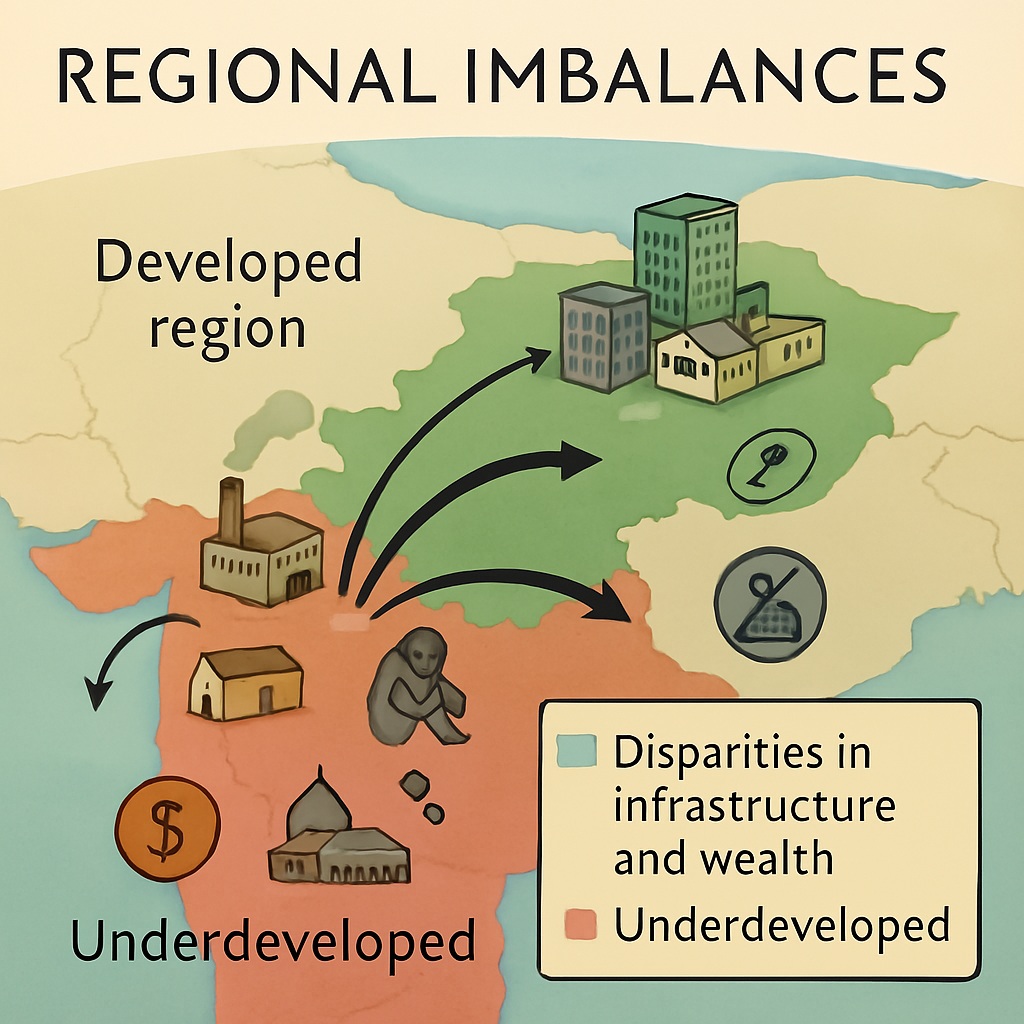Regional Imbalances refer to the unequal distribution of economic, social, and infrastructural development across different geographical areas within a country. While some regions may experience rapid growth and prosperity, others remain underdeveloped and deprived of basic amenities. This inequality in regional development creates social tensions, economic inefficiencies, and political instability.

Table of Contents
Factors Contributing to Regional Imbalances
Regional imbalances can be attributed to a wide range of factors, including the following:
- Historical factors: Historical factors such as colonialism and past economic policies can contribute to regional imbalances.
- Natural endowments: Natural resources, topography, and climate can contribute to regional imbalances.
- Investment and infrastructure: Unequal investment in infrastructure and lack of access to basic amenities such as electricity, transportation, and communication can contribute to regional imbalances.
- Economic policies: Economic policies that favor certain regions or industries can lead to regional imbalances.
- Political factors: Political factors such as corruption, instability, and lack of governance can contribute to regional imbalances.
Measures to Address Regional Imbalances
There are several measures that can be taken to address regional imbalances, including the following:
- Investment in infrastructure: Investments in infrastructure, including transportation, communication, and energy, can help to reduce regional imbalances by improving connectivity and access to markets.
- Fiscal policy: Fiscal policy can be used to redistribute wealth and resources to less developed regions. This can be done through measures such as regional subsidies, tax incentives, and grants.
- Human capital development: Investing in human capital development, including education and training, can help to reduce regional imbalances by improving the skills and employability of the local population.
- Industrial policies: Industrial policies can be used to promote the development of specific industries or sectors in less developed regions. This can be done through measures such as providing incentives for investment, tax breaks, and subsidies.
- Institutional reforms: Institutional reforms can help to reduce regional imbalances by improving governance, reducing corruption, and promoting transparency and accountability.
In conclusion, regional imbalances refer to disparities in economic development and opportunities between different regions within a country. These imbalances can be caused by a wide range of factors, including historical factors, natural endowments, investment and infrastructure, economic policies, and political factors. To address regional imbalances, several measures can be taken, including investment in infrastructure, fiscal policy, human capital development, industrial policies, and institutional reforms. The study of regional imbalances is critical to promoting inclusive economic growth and development, reducing poverty, and improving the quality of life for all citizens.